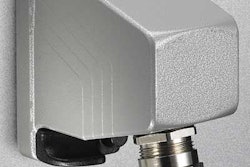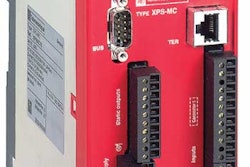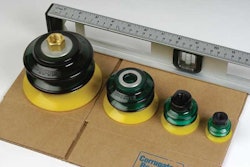Printing of batch-tracking and sell-by dates has become less costly and more reliable for Fullerton, CA-based Hidden Villa Ranch since the addition of three ink-jet Jet-a-Mark® coders from Matthews Intl.
Representing the second upgrade since HVR’s San Jacinto, CA, plant manually applied stickers to each package, the new coders provide a cost-effective imprint on egg trays overwrapped with printed film. Earlier, the plant had installed another ink-jet system, but discovered that it was costly to buy and operate because it offered features the plant didn’t need or use.
“Our first ink-jet printers were quite expensive, and they offered a lot of functions that we didn’t use,” says Ron Petersen, HVR branch manager. “So we started to look around for simpler, less costly printers, and we eventually found Matthews. Although these were originally designed for printing onto corrugated boxes, they worked out well for printing on our film-overwrapped trays.”
Now in operation for more than a year, the Jet-a-Mark S.C.I.F.I. 3200 printers require less than half the time to start up, shut down, clean, and maintain, Petersen points out.
Although the company has some 800 different ways to sort and pack eggs for various market requirements, the ink-jet printers are primarily used on its Conflex L-sealer overwrapping systems for 20-, 30-, or 60-count trays. The firm also employs a heat tunnel from Belco.
HVR buys the preprinted film from any of four distributors, some of which source the polyethylene film from converters in China, Petersen says. The Conflex L-sealer is equipped with a registration system that ensures the ink-jet system places the printing in exactly the same place for every wrap cycle.
On the top of the package, HVR prints a sell-by date and a Julian date that designates the day of production. “The Julian date is for tracking purposes, and the sell-by date is 30 days from the Julian date, by law,” Petersen points out.
“These overwrapped egg trays are often used in connection with promotional campaigns for one of our store customers,” Petersen says. “The trays sell especially well in Hispanic communities where the shoppers use a lot of eggs. The majority of that business is with small independent chains, companies with 12 or 14 stores. Some are also sold through club stores, but the top-selling egg package there is a twin pack of 18-egg cartons.”
In operation, the Matthews’ printers require about 50% less maintenance than HVR’s more costly ink-jet systems, primarily because the printhead doesn’t clog up, says Ron Stevens, maintenance manager at San Jacinto. And because warm-up periods are no longer necessary like they were with the other printers, the plant incurs less downtime on the printers.
Each printhead can mark one or two lines of characters sized from 1¼8” up to 13¼16”, and different ink colors can be used, Stevens says. The three units are small and portable, and there is no need for solvent cleaning because the ink doesn’t require additives. Although HVR doesn’t use bar codes for these packages, these printers will accommodate bar codes if customers begin to require them.
“Finally, ink consumption on these units has been reduced by far,” Petersen says, and the ink used in the Jet-a-Marks costs less than the ink for the other jet printers. Adds Stevens: “These units are much easier to operate for our people.”


























